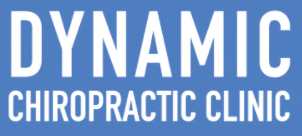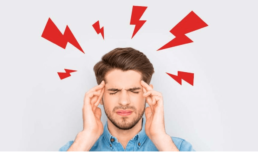Occipital Neuralgia
Occipital neuralgia (“base of the head nerve pain”) is a term used to describe various pains from the suboccipital region (base of the skull). It responds, in many cases, with relatively non-invasive chiropractic treatment supplemented with massage therapy.
Many chiropractic and medical experts now postulate that compression of this nerve along its path can be a cause of cervicogenic headaches, which can mimic classical migraines. Because it affects the path of the spinal nerve, a more correct diagnosis is “C-2 radiculopathy” instead of “occipital neuralgia”, but we’ll stick with this term for now.
Symptoms/ History
Occipital neuralgia often radiates to the back, front and side of the head as well as behind the eyes. Its been my experience that these headaches follow an arching pattern across the side of the head, often starting in the upper neck or base of the skull. It can be one-sided, or hemispherical, or on both sides. Sidedness doesn’t make the diagnosis… you can feel it on either side or both!
Of course, not all headaches are occipital neuralgia. There are numerous types of headaches, as defined by various councils on headache and headache generation. There are classic migraines, atypical migraines, cluster headaches, trigeminal neuralgia, arterial temporalis, even the classic hangover headache…. let’s just say there’s a lot of them out there.
We can tell the type of headache you have by when we get it, how it feels, and what makes it go away. For example, you can tell if your headache is the classic tension-type headache by when you get it… if you find that your headache comes on late in the day, after working, then you probably have a tension type headache. This headache typically responds well to aspirin.
In some of my patients, their scalp is tender to the touch.. even simply brushing your hair hurts.
Pain or pressure behind the eyes. Sometimes patients are “photophobic” …your eyes can be very sensitive to light. For this reason many people are given the “migraine diagnosis” and find that many of the drugs for migraine aren’t all that effective.
Like most headaches I’ve encountered, more women suffer from occipital neuralgia than men. This may be due to the relatively more narrow neck in women, thereby increasing the damage in whiplash injuries, but that’s just a theory of mine.
It’s been my experience that stress plays a role in these headaches, and that telling some to “stop stressing out and relax” when they are in pain really doesn’t help at all.
I’ve also found that these headaches can strike at almost any time in life, but I’ve noticed it almost always associated with a major fall, whiplash, or blunt trauma to the neck. My personal feeling is that scar tissue forms and entraps the nerve. I think that’s why chiropractic works so well for treatment of these headaches.
Many of my patients feel that “jamming their thumb in the base of their head” actually feels GOOD! My thinking on this helps relieve the nerve inflammation, because the pressure helps untrap them from the muscles through which they pass. Muscle spasm and pain are often associated with nerve entrapment, which causes localized pain, spasm and muscle cramping. Hmm. Does any of this sound familiar? If it does, we may have found some help for you!
The Official Headache
The IHS is the be-all, end all when it comes to headaches. They recognize occipital neuralgia as a jabbing pain that goes through the path of the greater or lesser occipital nerves, accompanied by a diminished sensation in the affected area. It is also common to be tender over the affected nerve’s area.
The criterion for diagnosis include:
A. Pain felt in the nerve distribution.
B. Pain may be stabbing or aching in between bouts.
C. Nerve tender to palpation.
D. Pain is eased temporarily by local anesthetic block of the appropriate nerve.
It must be distinguished from the occipital referral of pain from the C0-C1 junctionor from trigger points in the neck.
Anatomy
This is the approximate path of the greater occipital nerve, traveling from the base of the head or occipital region, to the temporal region, where it mingles with others nerves in that area. Can you believe what people will do for $20? This is another picture of the greater occipital nerve path along the base of the skull up and over the temporal bone. The author postulates that entrapment of the nerve can lead to migraine-like headaches.
There occipital nerves are two occipital nerves at the base of the head, the greater and lesser. They both start at the second and third vertebrae of the neck. While most people’s nerve roots originate in similar places on the spine, cadaver studies show a wide variety of differences between individuals as to the course of the nerves once they leave the spinal column. Often the nerves follow a curving course that passes through various muscles in the upper back, neck and head. In fact, many people (and ex-people)’s nerves pass through the trapezius muscle.
These nerves supply areas of the skin along the base of the skull and partially behind the ear. While the occipital nerves do not directly connect inside the skull itself, they join with other nerves outside of the skull and form a continuous “net” that can affect any area where the main nerves and their branch fibers go.
Causes and Risk Factors of Occipital Neuralgia
It’s been my experience that occipital neuralgia can be caused by trauma (a direct blow, fall or “whiplash”); spinal column compression; nerve lesions; localized infections or inflammation; even gout.
Commonly, the nerves are inflamed and sensitive because they are trapped within the muscles through which they pass. Muscle spasm and pain are often associated with nerve entrapment, which causes localized pain, spasm and muscle cramping.
Diagnosis of Occipital Neuralgia
Many conditions can show symptoms very similar to those found with occipital neuralgia. Your chiropractor should take a complete medical history and perform a physical examination to determine YOUR headache type and cause(s). Please understand that this article is not meant for diagnosing your problem… for that, you need to visit a doctor.
From Dr. Jho’s- Novel Surgical Treatment for Occipital Neuralgia website:
Diagnosis can be made by precise C2-selective nerve block under fluoroscopic control. If a C2-selective nerve block relieves pain temporarily while local anesthetic numbs the C2 sensory area, it confirms that the pain syndrome is caused by compression of the C2 nerve root and ganglion. In addition, MR scan of the cervical spine is obtained in order to confirm that patients do not have any other cervical spine disease that can sometimes cause occipital pain.
Treatment of Occipital Neuralgia
Like all treatment in my downtown Seattle chiropractic office, I always recommend going from least invasive procedures to most. We start with ways of bringing the nerve free of its constraints, via traction, massage, heat, and most importantly, chiropractic “lift” adjustments. If a round of chiropractic care doesn’t help, we may refer you to a more holistic MD for oral medications that are designed to reduce inflammation and spasms, localized therapeutic injections, and heat.
Should chiropractic not keep the symptoms at bay, the next step is to perform a temporary nerve block to see if symptoms go away. If they do, the next step is to look at a more permanent nerve block for relief. If even this doesn’t work, I’ve seen two treatments, one opening the holes through which the nerve travels (see above). The farthest end of the spectrum is to actually cut the nerve, not allowing it to feel or transmit any pain at all.
This method is based on the idea that this type of pain is similar to that which can occur in lower cervical nerve roots or lumbar nerve roots.
Some literature, if you are interested:
Outcome of Surgical Decompression of the Second Cervical Root for Cervicogenic Headache
Neurosurgery. 39(1):63-71, July 1996. Pikus, Harold J. M.D.; Phillips, Joseph M. M.D., Ph.D.
Pfaffenrath V, Damdelar R, Pollman W. Cervicogenic headache. The clinical picture, radiological findings and hypotheses on its pathophysiology. Headache 1987;27:495-499.
Sjaastad O, Fridriksen TA, Stolt-Nielsen A. Cervicogenic headache, C2 rhizopathy, and occipital neuralgia: a connection? Cephalalgia 1986; 6:189-195.
Vincent MB, Luna RA, Scandiuzzi D, Novis SA. Greater occipital nerve blockade in cervicogenic headache. Arq Neuropsiquiatr 1998;56:720-725.
Gomersall JD, Stuart A. Variations in migraine attacks with changes in weather conditions. Int J Biometerol 1973;17:285-299.
Caputi CA, Firetto V. Therapeutic blockade of greater occipital and supraorbital nerves in migraine patients. Headache 1997;37:174-179.
Bovim G, Sand T. Cervicogenic headache, migraine without aura and tension-type headache: diagnostic blockade of greater occipital and supra-orbital nerves. Pain 1992;51:43-48.
Vital JM, Grenier F, Dautheribes M, Baspeyre H, Lavignolle B, Sénégas J. An anatomic and dynamic study of the greater occipital nerve (n. of Arnold): applications to the treatment of Arnold’s neuralgia. Surg Radiol Anat 1989;11:205-210.

